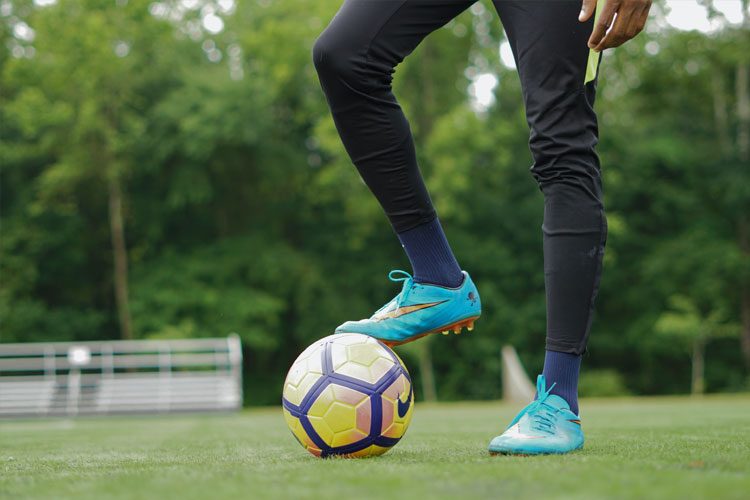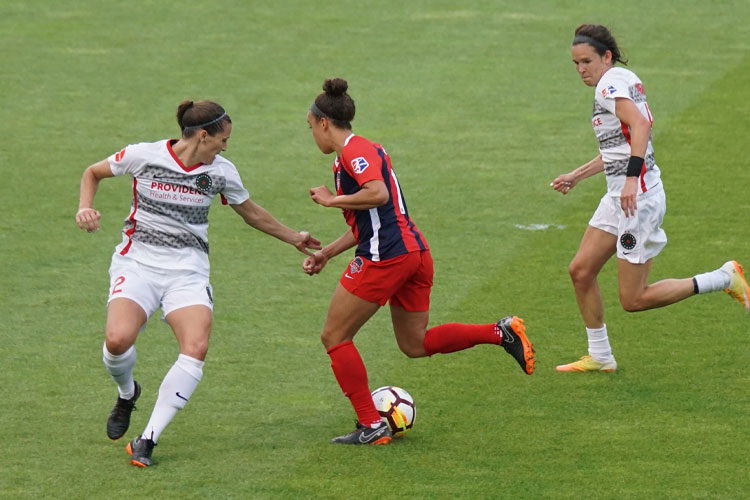
What is a Rondo in Soccer?
A rondo is a training drill that utilises a group of players with the objective of keeping possession of a football. Players are split into two uneven sides where the numerically disadvantaged side is asked to win possession of the ball.
The following article will explain further how the drill works and what some of the benefits of the rondo are.
Rondo in Training
Rondos are set up by spacing out multiple players in a circle (hence the name) or a grid. Other players start in the middle of the rondo and have to try to get the ball back by intercepting passes.

Usually, one ball is used but additional balls can be introduced to increase the pace of the drill and add another element to bear in mind. Depending on the size of the rondo and the skills of the players, additional restrictions can also be imposed such as only using your weak foot or keeping it to one touch.
Counting the number of successful passes before the ball is intercepted is a good way to keep track of progress and gives players a target to beat.
Why Rondos Are Beneficial
There are many benefits to regularly doing rondos in training. For the passing team, skills such as ball control, passing accuracy, and decision-making are developed. The passer must quickly assess the best passing lane and execute a well-placed pass in order to keep possession of the ball. One variation of the rondo will see players who make misplaced passers swap out for the defending player who intercepted or forced the mistake.

Another advantage to the rondo is how it helps develop first touches. The player receiving the ball needs to take a good first touch or risk losing possession of the ball. The passes they receive may vary from short lay-offs besides them to cross-field pings. Either way, ball control is crucial and will surely improve with this high-pressure situation of a rondo.
Rondos are also a great training tool for the defensive team. The players in the middle will be outnumbered by the passers so they must work hard to get the ball back. One way they can do this is by closing down the passer quickly and pressing them into a mistake. This will requires speed, awareness, and stamina.

Another defensive quality that will be improved through participation in the rondo is intercepting. This is part of pressing but the skill of timing your pressure to cut the passing lane when the pass is being made can be difficult to master. Press too early and too obviously and the passers will switch the ball in a different direction. Press too late and you will struggle to get to the ball in time as the pass is made.
Finally, the rondo is excellent for teamwork. This is true for both the passing team and the pressing team. For the passing team, teamwork is important in indicating passes and gaining an understanding of what the passer is going to do. Being prepared to receive a pass from a teammate that isn’t overtly looking to pass to you is a great skill to develop.
On the other hand, the pressing team has to work hard in unison to create a solid defensive cover. If you are pressing with a second teammate, it is imperative that you communicate and cut off different passing lanes for a better chance of a successful press.
If your child wants to try the rondo why not bring them down to a Samba Soccer Schools where they can learn to play football in the Brazilian way? We specialise in teaching children how to master the ball including their passing techniques through using the Rondo. For more information, click here.
FAQs
Why is it called a rondo?
Rondo translates to round and refers to the shape the passing team takes up in this drill.
How many people do you need for a rondo?
The numbers involved in a rondo can vary hugely but you will need at least three (two passers and a presser) but preferably more to resemble a traditional rondo.
Are rondos difficult?
Rondos are only as difficult as you make them. For example, smaller grids with few pressers will make for an easier drill for the passing team.
Can anyone do a rondo?
Yes, as long as you have football and enough patience to learn, anyone can do a rondo.
How do I set up a rondo in training?
The article above gives a detailed explanation of how to set up a rondo.


